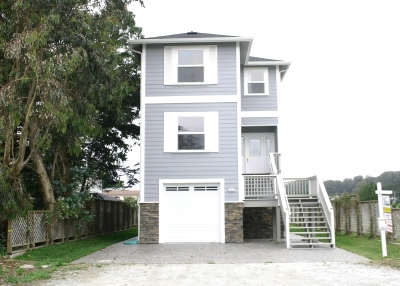As the perpetuation of the myth that "Downtown is doing just fine" continues, and as long as business owners stay focused on flower box arrangements instead a marketable product mix, businesses will continue to struggle to survive. Meanwhile, landlords and property managers remain at the ready, knowing that there will always be a plethora of dream-inspired gallery and gift shop owners lined up and ready to dive in with their retirement savings, unwittingly contributing to inflating the rents beyond the reach of normal business that would traditionally be able to serve the local community.
Madeleine Sausotte of Ocean Books and I have been looking for a solution. Last August, we released the findings of a survey of downtown merchants to local business groups, the results themselves disturbing. Nearly half (48%) of the merchants who responded to the survey said they had been struggling to some degree over the last three years. Nearly three-quarters (72%) depended on their spouses, savings, or even loans, to keep their businesses going. A quarter said that their business was taking a toll on their health. Informally, the news was even worse. It pointed to a change in Coastside consumer purchasing patterns that, over the decades, has left many local businesses losing sales to malls, big box stores, and internet sales.
Even though the survey data clearly indicated some disturbing trends and the need for a follow-up Resident Survey, business groups remained indifferent.
In October of 2005, Madeleine announced a plan to follow up with a Coastside "Residents" Survey and to announce a future Town Meeting for early in 2006 to help develop the content of that survey. The goal was to help educate everyone about the current state of affairs and to ask in what direction people thought HMB needed to go. The meeting would be open to all, and the Chamber and the Downtown Merchants Association were to be invited, as well.
"Borrowing" the concepts for both the Resident Survey and the Town Meeting, the Chamber recently called a meeting at Ted Adcock Center on March 2nd, among representatives of the City, a small number of merchants, the HMB Chamber of Commerce, and the Downtown Merchants Association. The purpose of the meeting had been planned to hear merchants’ wishes and concerns and address the relationships between the different organizations.
The issues brought up at that meeting, often mired in process, seemed more focused on new ways to continue to embrace the near-dry nipple of the tourist trade and the disturbing portrayal of the ongoing illusion of prosperity downtown than with actually addressing the needs of local residents.
Whatever discounts had been offered in the past to lure local consumers downtown hadn’t meant much, since - not surprisingly - consumers were not interested in buying art and gifts to feed and clothe their families. The locals continue to shop elsewhere and business owners continue to scratch their heads in wonderment, waiting to see which of the "other" business owners might bite the bullet and radically alter their product format enough to change the tide on Main Street.
The economic wind has changed its direction, yet again, and will continue to do so. The price of gas, the loss of time with family, and the wane of the novelty of the malls and the Big Boxes have altered purchasing desires. The captains of Downtown must reset their sails to accommodate those changes. Every time the wind changes, as fickle as the wind sometimes is, so must we consider changing the set of our canvas; sometimes even a change in course. We will go nowhere as long as the "powers that be" stubbornly insist that they have already sent the crew into the rigging to set their sails and that now it’s time to polish the brass.
Frank Long is the owner of Oasis Natural Foods on Main Street in Half Moon Bay











